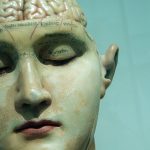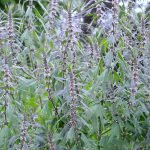Rethinking Curriculum Toward an Integrated Program in Naturopathic Medical Education
David Chandross, BSc, MSc, MEd, PhD
Fraser Smith, MATD, ND
Education
Naturopathic medical education has indeed come a long way in the last 50 years, from a single school in the Pacific Northwest in the 1960s to a network of high-quality accredited institutions and programs that we have today. This transformation has been critical to the steady ascent of naturopathic medicine. The weakness of naturopathic medical programs (NMP) in the first half of the 20th century was their resource constraints and their lack of institutional development. These informal institutions were no match for a mid-20th century medical program that was ensconced in a research-based university and attached to 1 or more federally funded teaching hospitals.
Naturopathic medical education today is at a similar crossroads. In addition to ongoing financial, structural, and physical constraints, the challenge to NMPs is to develop a coherent model of education that is sufficient to create a primary care practitioner, nuanced and grounded in a naturopathic model. It must be forward-looking in the science that it uses to inform the curriculum and in the educational methodology to deliver it.
How We Arrived
In the preceding 3 decades, there has been a wholesale transformation of naturopathic medical education. Small schools have grown in size and sophistication. The 8 CNME-accredited or candidate (www.cnme.org) ND programs,1 have extensive clinical education systems, research agendas, and thousands of alumni. The curriculum has evolved to keep pace with advances in the field, such as increasing interest in intravenous therapeutics and the use of pharmaco-therapeutics in many jurisdictions. The standard of education, by virtue of NPLEX scores and various peer-review evaluations, is on par with a North American allopathic medical school. The Association of Accredited Naturopathic Medical Colleges2 (www.aanmc.org) holds the schools together in a solidarity that some professions lack. Nevertheless, substantial legacy challenges are catching up to us, and rapid transformation in medical sciences and health care delivery will increasingly confront us.
Key Issues
The core issues that affect medical education, in general, influence naturopathic medical education (NME) as well.
Here is a summary of the main pedagogical changes faced by higher education today3:
- There is an increase in demand for soft skills, communication, knowledge translation use, and social media literacy
- There is a demand for personalization of learning and a transition from knowledge provision to coaching
- Online learning, game-based learning, and simulation-based learning, including virtual and augmented reality, is preferred over face-to-face instruction in many cases
- “Just-in-time learning,” microlearning, burst instruction, and analytics are becoming central to teaching
- Cultural diversity in learners is increasing, as are practice objectives and specialization
Broadly, the key issue is whether the existing passive-learning strategies seen in many STEM courses (Science, Technology, Engineering, and Math) are adequate to equip professionals to utilize technologies in an optimum way. Numerous meta-analyses have shown that active learning in STEM courses correlates with a marked increase in scores, as compared with passive learning.4 The naturopathic educational model, whereby content is distributed using courses conducted by a leader, is not entirely compatible with upcoming trends in higher education. In fact, this model is growing increasingly stale as learners search for some of the elements cited above in NME settings. Moreover, the 2K generation, sometimes known as Generation Z, has a distinct learning style5 that is virtually incommensurate with the legacy curriculum and its delivery in much of higher education including NMP.
The other core issue is an epistemological question of how one integrates disparate treatment rationalization across a curriculum in a cohesive way. Homeopaths, acupuncturists, and those using clinical nutrition as a core system have no common knowledge to draw upon; in fact, in most jurisdictions these are now licensed as entirely separate entities, with little cross-talk between them. It is entirely possible for a TCM doctor and a homeopathic physician to co-exist in the same practice setting and never use the same language or treatment rationale. They co-exist but do not affect each other’s practice. NME therefore faces a profound educational dilemma of simultaneously endorsing completely unrelated fields of practice. This is not similar to medicine, where psychiatry might have different approaches but has an allegiance to the biomedical model. Rather, this is as though each treatment system existed on different planets, but somehow must be integrated into something more nuanced than an interdisciplinary algorithmic approach to treatment where disciplines do not intersect. (In this compartmentalized model, condition A is treated with acupuncture, condition B is treated with homeopathy, etc.) Any 2 fields have almost nothing in common beyond the object of care. Moreover, even if such algorithmic systems were to be developed, this would contravene the most basic principles of NME, that of multi-modality treatment integration and a personalized view of health. It is around this last concept – that of personalization of care – that the solution to these combined pedagogic and epistemological problems might be forged.
Solutions
These 2 problems must be addressed separately at first, given that they are of an entirely different nature.
Active vs Passive Learning
The first one, that of technological transformation in NME, is easily amenable to solutions, and efforts are continuously underway across colleges to find the right blend of passive and active learning. The deans in the NME programs are champions of innovation, with sometimes limited resources. What does continue to provide obstacles to change is the fixed idea that NME must consist primarily of courses taught by professors. It is possible to use problem-based learning, such as that seen at Harvard and McMaster University in Ontario, or case-based learning, such as that used by the University of Calgary Medical School. The Calgary and McMaster medical programs are both 3 years in length and are divided into learning units whereby students encounter patients early in their training, some within days of starting the program.
There appears to be an unwillingness to let go of long-outdated learning methodology in NME, due to a perceived loss of credibility that might accompany any form of genuine curriculum reform. However, these fears have proved to be largely unfounded. In the contemporary example of the proclamation of the Naturopathy Act in Ontario, a great success that led to a modern licensing act for a very large population of naturopathic doctors, it was not pedagogic or intellectual issues that were central to formulating a regulatory strategy. Rather, it was the concept of risk of harm and its impact on self-regulation desirability. We do not see frequent criticisms leveled at NME content from outside the profession; the criticisms are related to efficacy and more importantly for the purpose of our discussion, those of coherency (a few highly biased websites notwithstanding). Building a coherent integrative curriculum has little to do with lectures and exam rigor and everything to do with how a student learns to think. How will the NME graduate function in a technological space where new treatments emerge and others lapse? Surely, the long-ago case of Iridology can be cited here – a modality which did not survive the pruning of curriculum content in modern NME. Therefore, the professional issues do not spring from an inability to judge what to put in the curriculum, nor from a dearth of content to be mastered. Rather, they spring more from a clinging to passive learning, where the student is a receptacle for knowledge rather than an active creator of it. Given the acceleration of knowledge creation in medicine, and its relative ease of access, the 21st century ND student must be a navigator and evaluator of knowledge, more than a receptacle.
Curriculum Integration
As information, research, and techniques expand, simply piling on didactic, lecture-based, basic-science information, and attempting to “cover” every anticipated naturopathic medical treatment, will simply not suffice. Therefore, further burdening the NME student with an ever-burgeoning array of biomedical facts, figures, and citations is very unlikely to sway the detractors. Moreover, less of a deluge of content, a simple change of attitude, and a willingness to self-examine treatment and commit as much as possible to an evidence-based approach will attenuate a certain amount of fair criticism leveled at the profession.
It is not within the scope of this discussion to analyze the deeper epistemological issues that face the profession; integration is a laborious and continuous process, which psychiatry, among other specialties, faces daily in conventional medicine. In fact, conventional medicine has transformed to the point that it now faces many of the same issues – that of developing coherency and explanatory power across different treatment approaches. The criticisms of NME in this regard are not moot, but neither are they the issue that a dean must face in a pragmatic sense. Those are professional identity issues which impact educational methodology, and that is where NME can help correct this tension and also improve the quality of learning in their cohorts of students. It is not necessary to find the meaning of life in order to build an argument to preserve it.
A large part of the solution is using naturopathic clinical theory and principles as the true basis for a curriculum (Dr Louise Edwards, oral communication, May 2017). These concepts are often well represented in NMPs yet don’t always truly impact the micro-design of curriculum. For example, if addressing disturbances to the determinants of health and the resultant physiological imbalances is truly the priority in naturopathic medicine (which these authors believe), then the curriculum should perhaps be built around it. But it does not entirely solve the problem of curricular design, delivery, and evaluation. What would happen if we were not so beholden to content, subjects, and disciplines within themselves?
For example, the concept that one must offer botanical courses, often in a consecutive flow, ie, levels 1-4, within a program is something worth questioning. What if students learned botanical medicine on a case basis, where cases were designed that forced students to encounter phytomedical solutions to a pain problem, for example, alongside learning about pain neuroscience, pharmacology, homeopathic theory, and occupational health? The separation of content into distinct bodies of knowledge first splits naturopathic practice into components, and then demands that the student now re-integrate them in the clinical years. This disconnect between the way the material is presented and what a naturopathic doctor actually does in practice is the problem. An entirely different mental construct is created during the intense pre-clinical training, which is at odds with the work of a nascent practitioner in action. We often observe that interns – students that arrive at the coveted “hands on” phase – are more than capable of researching, organizing, assimilating, and applying new therapeutic information, quite outside of a distinct “course.” Although a certain amount of basic knowledge about human structure and function, disease, and dysfunction allows for a more advanced conversation about treatment, does it follow that dissociating the various components of the NME until the very end is an effective pedagogy? There is no evidence to indicate this.
There is nothing particularly compelling about this methodology of separating modalities into isolated worlds and then making them fit together later. One could argue that it is counterproductive. If medical education with its relatively more confined divisions in epistemological foundations, such as physiotherapy vs psychotherapy, is capable of resolving this schism, then surely NME can do so. In fact, given the integrative nature of NME, one can develop a compelling case that it must do so. To refuse to abandon the schism based on a fear of being judged inadequate by other professions is to “mind-read” and anticipate the worst. The outside criticisms directed at naturopathic medicine are purely epistemological, not pedagogical. There was a time when pedagogical credibility was central to this discussion, but that discussion has moved on.
Summary
Now that NME has secured a place in health professions education, surely it is time to let down the walls between disciplines and to move away from a passive-learning model, particularly in STEM disciplines such as pathology. To a large degree, we believe that evolution will determine whether we grow and adapt to the progress of 21st century medicine, or find our profession out of step with the broader culture, as it unfortunately was during the mid-20th century. We believe the future for naturopathic medical education is bright.
References:
- Council on Naturopathic Medical Education. Accredited Programs. Last updated July 2017. CNME Web site. http://www.cnme.org/programs.html. Accessed September 9, 2017.
- Association of Accredited Naturopathic Medical Colleges. 7 Accredited Naturopathic Programs Across 8 North American Campuses. AANMC Web site. https://aanmc.org/naturopathic-schools/. Accessed September 9, 2017.
- Scott CL. The Futures of Learning 3: What Kind of Pedagogies for the 21st Century? December 15, 2015. Education Research and Foresight: Working Papers. Available at: http://unesdoc.unesco.org/images/0024/002431/243126e.pdf. Accessed September 9, 2017.
- Freeman S, Eddy SL, McDonough M, et al. Active learning increases student performance in science, engineering, and mathematics. Proc Natl Acad Sci U S A. 2014;111(23):8410-8415.
- Kriegel J. Differences in Learning Preferences by Generational Cohort: Implications for Instructional Design in Corporate Web-based Learning. March 2013. [Dissertation]. Available at: http://tinyurl.com/y8c3k25t. Accessed September 9, 2017.
Image Copyright: <a href=’https://www.123rf.com/profile_dizanna’>dizanna / 123RF Stock Photo</a>
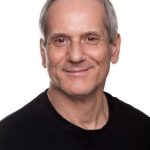 David Chandross, BSc, MSc, MEd, PhD, is a curriculum design consultant specializing in gamification in both health professions education and higher education. He is currently Program Coordinator for Ryerson University for their joint program in senior’s education at Baycrest Health Sciences, and a research associate and game-based learning designer working as a curriculum design consultant. Research interests include learning and aging, educational innovation, and gamification in health care. David served as faculty in basic science for 10 years at CCNM, and held positions as Assistant Dean and Academic Dean during his tenure.
David Chandross, BSc, MSc, MEd, PhD, is a curriculum design consultant specializing in gamification in both health professions education and higher education. He is currently Program Coordinator for Ryerson University for their joint program in senior’s education at Baycrest Health Sciences, and a research associate and game-based learning designer working as a curriculum design consultant. Research interests include learning and aging, educational innovation, and gamification in health care. David served as faculty in basic science for 10 years at CCNM, and held positions as Assistant Dean and Academic Dean during his tenure.
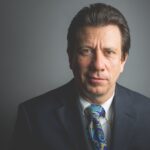 Fraser Smith, MATD, ND, is the Assistant Dean of Naturopathic Medicine and Professor at the National University of Health Sciences (NUHS) in Lombard, Illinois. Prior to working at NUHS, he served as Dean of Naturopathic Medicine at the Canadian College of Naturopathic Medicine (CCNM) in Toronto, Ontario. Dr Smith is a licensed naturopathic physician (Vermont) and author of several books, including the textbook Introduction to Principles and Practices of Naturopathic Medicine.
Fraser Smith, MATD, ND, is the Assistant Dean of Naturopathic Medicine and Professor at the National University of Health Sciences (NUHS) in Lombard, Illinois. Prior to working at NUHS, he served as Dean of Naturopathic Medicine at the Canadian College of Naturopathic Medicine (CCNM) in Toronto, Ontario. Dr Smith is a licensed naturopathic physician (Vermont) and author of several books, including the textbook Introduction to Principles and Practices of Naturopathic Medicine.


